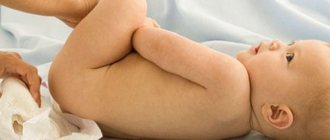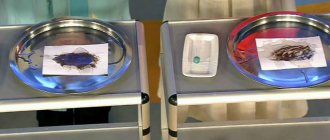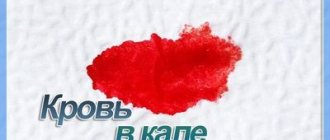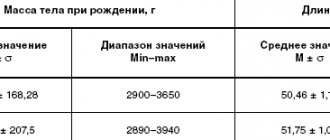Causes of red stool
Consumption of coloring products
Most often, the appearance of red feces in adults is associated with eating large quantities of foods of the corresponding color - beets, tomatoes, berries. The reddish tint of stool is caused by artificial dyes in candies and carbonated drinks. In this case, the stool has a normal consistency, the frequency of bowel movements does not change. There are no other unpleasant sensations from the gastrointestinal tract. Normalization of the color of stool occurs in 1-2 days.
Haemorrhoids
Blood from enlarged hemorrhoids is released in drops already at the beginning of the disease. In this case, the feces have a normal color, but red streaks become noticeable on its surface. The frequency of stool with hemorrhoids is reduced to 3-4 times a week, which is due to a reflex spasm of the rectal sphincter muscles. Characterized by pain in the anus, which sharply intensifies during defecation.
As the disease progresses and the venous nodes increase in size, hemorrhoidal bleeding becomes more frequent. The stool takes on a greasy or liquid consistency and a reddish color due to the large amount of blood. In severe situations, with ulceration of hemorrhoidal veins, profuse bleeding begins, in which the stool loses its fecal character, and bright red blood is released from the anus.
Other diseases of the rectum
The appearance of red inclusions in stool is caused by inflammatory causes. In acute erosive proctitis, blood is released from the affected mucous membrane, which stains the stool. In the case of a bacterial infection, stool of a liquid consistency with abundant bloody-purulent inclusions is observed. Patients also experience constant pain in the anal area, radiating to the perineum and sacrum.
Red stool is caused by anal fissures. They are characterized by severe sharp pain during bowel movements, followed by the appearance of stool mixed with blood. Symptoms often develop with prolonged constipation, when a person has to strain very hard, and dry, hard feces injure the intestinal mucosa. The formation of an anal fissure is possible in women after childbirth.
Infections
Red streaks in stool are a characteristic symptom of dysentery (shigellosis). Bacterial toxins cause damage to the intestinal walls, from which blood is released. At the beginning of the disease, the stool is liquid and has a fecal character with isolated bloody inclusions. In severe cases, the number of bowel movements increases to 10-12 times a day, stools are scanty in the form of mucus mixed with blood. Patients complain of severe cramps in the abdomen, especially in the left side.
Copious red stools sometimes occur at 3-4 weeks during the typical course of typhoid fever, which is associated with bleeding from a deep typhoid ulcer. Liquid, mucous stool with a lot of blood, like “raspberry jelly,” is a pathognomonic sign of amoebiasis. In addition to the reddish color of the stool, severe abdominal pain, nausea and vomiting are disturbing. With such symptoms, emergency medical care is indicated.
Inflammatory bowel lesions
In Crohn's disease and nonspecific ulcerative colitis, deep ulcerative defects are formed that bleed. Red stool is more common in UC because it causes damage to the distal bowel. Against the background of a painful imperative urge to defecate, the discharge of scanty feces with admixtures of scarlet blood is noted. Exacerbations are provoked by reasons such as stress, errors in diet, and concomitant intestinal infections.
Neoplasms
Occasionally, a reddish color of feces is observed with colonic polyps and other benign tumors, which eventually become covered with ulcers due to constant traumatization by hard feces. Red color of stool is more common with intestinal cancer tumors, since they ulcerate and disintegrate faster, involving blood vessels. I am concerned about dull pain in the abdominal cavity, prolonged constipation, and progressive weight loss.
Complications of pharmacotherapy
Most often, stool staining occurs during prolonged treatment with the anti-tuberculosis drug rifampicin. It is red in color and when it enters the body it turns into metabolites, which are excreted in different ways. Therefore, not only feces, but also urine, tear fluid, and sweat acquire a reddish color. Atypical coloring of stool is sometimes possible with long-term use of vitamin A in high doses, which contains carotene pigments.
Impurities in stool
Norm
A few white lumps in the stool of a breastfed baby are not a pathology. In children receiving dense foods, there are undigested pieces of vegetables and fruits, the skin is also normal.
- White lumps in the stool. Of course, even a breastfed baby's stool is not uniform. Most often, mothers are worried about white lumps - these are traces of breast milk; their presence in small quantities is considered normal. If your child's weight is constantly growing, there is no reason to worry. Many white lumps in an infant's stool are a reason for a nursing mother to think about a proper diet with fewer fatty foods in the diet. Such lumps also occur in bottle-fed children - these are the remains of undigested milk formula. With age, as the digestive systems and functions develop, such lumps in the stool are no longer observed.
- Small pieces and fibers in the stool. With age, we accustom the child to denser foods - pieces of boiled, and then fresh vegetables and fruits. But your baby will not be able to learn to chew correctly and thoroughly (mechanically process food) right away. And even the intestinal microbiota cannot “finish” large pieces of vegetables and fruits (dietary fiber) - the bacteria of the digestive tract normally process dietary fiber; our body does not have enzymes to digest it.
Diagnostics
If red stool is combined with complaints of pain and gastrointestinal dysfunction, the patient should consult a gastroenterologist. A diagnostic search involves conducting a comprehensive examination of the digestive system using laboratory and instrumental methods. The most informative ones are:
- Coprogram
. To confirm the presence of blood in the stool, the Gregersen test is necessary. Microscopic analysis evaluates the amount of undigested food and the presence of leukocytes. If infectious causes of red stool are suspected, bacterial culture of stool on nutrient media is recommended. To diagnose UC, the level of fecal calprotectin is determined. - Endoscopy
. Endoscopic examination has the greatest diagnostic value for organic diseases of the lower gastrointestinal tract. To study the condition of the distal parts of the colon, sigmoidoscopy and sigmoidoscopy are sufficient. A colonoscopy allows you to examine the entire large intestine. During the procedure, a biopsy is taken from suspicious areas. - X-ray method
. For the purpose of a comprehensive assessment of the state of the digestive tract, barium passage radiography is shown, with the help of which destructive changes in the intestine and neoplasia are detected. If colonoscopy is not possible, double contrast irrigography is used to diagnose colon pathology. - Lab tests
. A general blood test shows signs of anemia, the severity of which correlates with the degree of blood loss. To confirm the inflammatory cause of the appearance of red stool, biochemical analysis and an extended immunogram are used. Bacterial infections that affect the intestines can be identified by detecting specific antibodies in the plasma.
Orange stool with functional disorders of the gastrointestinal tract
The color of stool is determined by bile pigments. They are the ones who color the stool in the “classic” brown color inherent in intestinal discharge without pathologies. If bile does not enter the intestines in sufficient quantities, it means that bilirubin synthesis does not occur in the liver and its enzymatic function is impaired. The reasons for this may be hepatitis, cirrhosis of the liver. A lack of bile pigments in bile can be caused by a violation of its outflow due to blockage of the bile ducts with stones, cholecystitis, a tumor process in the gallbladder, or its inflection. Then, along with a change in the color of stool, symptoms such as pain in the hypochondrium, digestive disorders (bloating, flatulence), and an unpleasant taste in the mouth appear.
A gastroenterologist can correctly evaluate all these symptoms. He will prescribe laboratory and diagnostic tests and qualified treatment. You should not neglect such a symptom as orange stool, especially if it occurs in young children. Along with the reasons for this stool color that are harmless to the body, it can be a manifestation of serious diseases.
How feces, its color, smell, consistency can “tell” about a person’s state of health, watch the video:
https://www.youtube.com/watch?v=3t7Fe5DVRho
Treatment
Help before diagnosis
The passage of feces of an atypical color, which is caused by excessive consumption of red foods and occurs against the background of good health, does not require therapeutic measures. If the symptom occurs simultaneously with abdominal pain, nausea and vomiting, you should consult a doctor to find out why the red stool occurs. In case of intestinal bleeding, emergency medical attention is required.
Conservative therapy
Medical tactics depend on the cause of stool turning red. For intestinal infections, along with medications, therapeutic fasting or a gentle diet with strict restrictions is indicated; oral rehydration is recommended to correct water-salt metabolism. The prescription of medications is aimed at eliminating the underlying pathology that caused the red stool. Most often used:
- Antibiotics
. Medicines are selected that selectively affect intestinal bacteria. For better effect, they are combined with local antibacterial agents that act only in the intestinal lumen. For amebiasis, specific antiprotozoal drugs are indicated. - Anesthetics
. With hemorrhoids and anal fissure, pain syndrome comes to the fore, for the relief of which suppositories and ointments with local anesthetics are used. The drugs improve the well-being of patients and create conditions for rapid healing of mucosal defects. - Derivatives of 5-aminosalicylic acid.
These drugs are the main ones for the treatment of ulcerative colitis and Crohn's disease. They have a pronounced anti-inflammatory effect, stimulate epithelial regeneration and healing of intestinal ulcers. In severe forms, immunosuppressants are added to the treatment regimen. - Plasma replacement solutions
. Infusion therapy is carried out in case of massive intestinal bleeding to restore blood volume and maintain heart function. The infused solutions contain optimal concentrations of basic electrolytes. Colloidal preparations and fresh frozen plasma are also administered.
What if the complaints disappeared during the diet, but doubts remained?
It is possible to reintroduce the allergen protein: the previous complaints have reappeared - doubts have been resolved.
Important: this should not be done in case of acute and severe allergic conditions; anaphylactic shock is possible!
But proctocolitis is not an acute, not serious condition, so the experiment is possible.
The prognosis for non-IgE conditions is usually good.
Complaints will disappear even if you do nothing at all... but it’s better not to do that!
Often, when discussing complaints from a baby, parents remember that older children also had blood in the stool in the first months of life, but then disappeared on their own. With hindsight we understand that most likely they also had allergic proctocolitis.
In most children with proctocolitis, complaints disappear before the age of one year, with FPE between the ages of 1 and 3 years, with FPIES between the ages of 1 and 5 years.
Very rarely, allergic proctocolitis persists into older age or occurs for the first time in older children or adults.
In these cases, it is very difficult to exclude a certain trigger food product; drug treatment is often required - corticosteroids, aminosalicylates. The range of conditions for a differential diagnosis by a doctor is also different.
9, total, today











